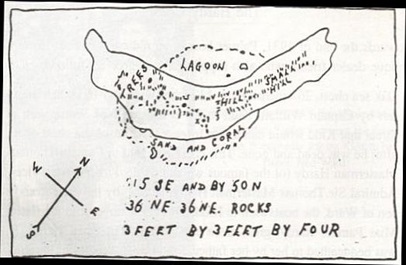
Harold T Wilkins & Richard Latcham's Captain Kidd treasure map circa 1930s
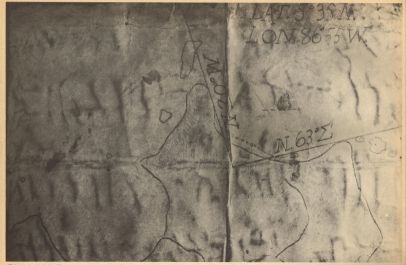
Jame Forbes IV Cocos Island treasure map circa 1940s
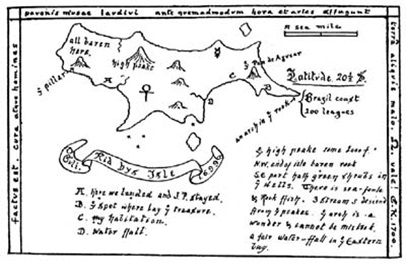
Treasure map from book 'Captain Kid's Millions' 1897
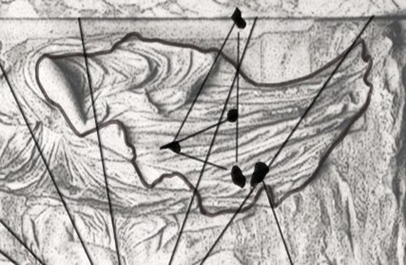
The monumental treasure map of the Shepherdess circa 1740s
You probably have come across this website after watching a reality TV treasure hunt or reading a lost treasure story that ended so inconclusively it left you with more questions than answers.
Perhaps you had even formed a suspicion that something had been missed or that you hadn’t been told the full story or even worse, you had been fed an outright fabrication.
What you are about to learn here is the history of some events involving the loss of a real treasure. These events and an accompanying map that marked the treasure’s location became legend. In doing so they spawned a number of the more famous and infamous ‘lost treasure mysteries’ that have beguiled and plagued many for generations. You will also learn how little, if any, actual research was ever done into it all by quite a few of those you have watched or read about. In some cases you will find out that the depth of their research never even went as far as opening a newspaper of the times as the answers or details that they said were now unknown or missing were appearing in them.
By the end of this first page you will have been provided with enough of the now forgotten background information that it will enable you to go on and learn how the legends behind Captain Kidd’s Pirate Treasure Charts, Oak Island, Rennes le Chateau, Cocos Island or Trinidade Island to name a few of the well known ones came about.
This website has been going on for years so be patient, have fun and work through the pages in their correct order. New evidence is being found everyday as archives and their historical holdings come online. No longer can the dissemination of information be controlled by those who need a fabricated version of a story promoted as it favours their interests.
Synopsis
Around the year 1714 a Spanish nobleman, Don Juan Esteban de Ubilla, took a special treasure from Northern Spain and hid it literally on the other side of the world. History indicates the treasure contained a hoard of ancient items that many believed or were told had originated from the Temple of Jerusalem. Directional instructions and a map to the hoard were transmitted by Ubilla to the English Royal Society who then became the reluctant stewards of what was considered to be God’s own treasure. A series of unfortunate events then transpired including a failed British expedition to recover the hoard in 1761. This all resulted in a legend being spawned about a man who dies that leaves a map (or coded instructions) to an island (or somewhere) where there is hidden a huge ‘church’ treasure (the remnant hoard) protected by guardians (the Royal Society).
Sound familiar? Of course it does!
With accounts of these events having been told and retold across the world since the late 18th century they can be identified appearing as the core plot of many lost treasure stories such as ‘Treasure Island’ to ‘The Da Vinci Code’. Even today it is the driving force behind many treasure hunts where the searchers are unaware they are just following an altered version of this one story.
If you can get your mind around this : ONE TREASURE, ONE STORY, ONE MAP: MANY DIFFERENT VERSIONS, you are well on the way to understanding what has gone tragically wrong for all this time and prevented this not so lost at all treasure being recovered.
The Modern History
That the modern history of how this treasure became ‘lost’ started as recently as about 1714 does come as a surprise for many.
After King Charles II of Spain died in 1700 it precipitated the Spanish War of Succession. This ended in 1714 with the French House of Bourbon taking the Spanish Crown away from the Hapsburg family. Though the House of Hapsburg was still entitled to the royal power this hoard bestowed (as they still claimed the titles of King of Jerusalem and Emperor of the Holy Roman Empire) Ubilla decided otherwise and so removed it from the grasp of both of these Royal Houses.
Where the treasure came from in the first place and why it was so important is the interesting part so we need to go back to biblical times.
According to the bible, Moses directed a set of vessels, items and furnishings for the Tabernacle in the Wilderness. These were eventually moved into the Temple of Jerusalem when it was built. An idea of what this set contains can be found by reading the inventory of the items in the bible (covered in detail much later). To protect this set of irreplaceable items it was later decided to cache it under the Temple. To replace it, Hebrew artisans fabricated copies of the items which were then used to re-furnish the Temple.
A number of these copy sets themselves were lost during the various looting events or invasions that occurred during the history of the fledgling Hebrew nation. After each looting though a new set of copies were made to restock the Temple. The last such set of these copies was looted by Titus’ troops in 70AD. You can see them illustrated on Titus’ Arch in Rome.
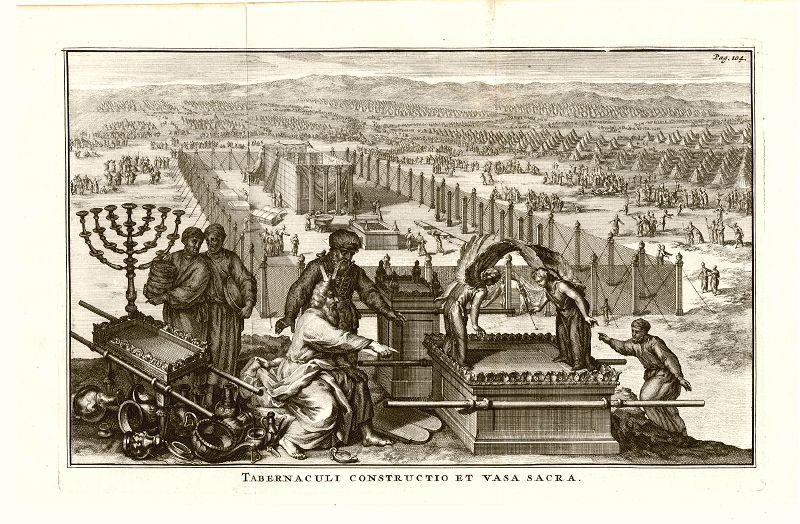
Moses directing the fabrication of the Tabernacle vessels
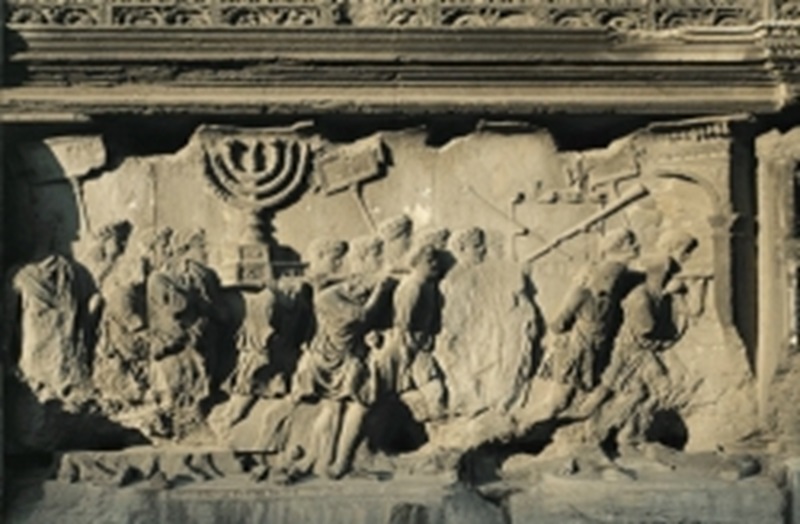
The Romans making out like bandits on Titus' Arch
The import of the Temple vessels came from the Davidic Kings, those divinely sanctioned Hebrew kings who took their authority to rule directly from God. Their ‘proof’ of true sovereignty was possession of the Tabernacle furniture and the Throne of God (the Mercy Seat on the Ark). If anyone wanted to argue about who was King, the Hebrew tribes just wheeled out the Ark to settle any dispute. It is why many Kings (and Philip IV of France) wanted to get their hands on the hoard; its possession was certification you were the REX MUNDI, the King of the World.
Jesus, through his mother, was of the Davidic line. It seems he may have produced a Temple vessel as his proof of Kingship during the last supper. The Pharisees and Sadducees were not impressed and you know the rest of the story. This may be the explanation of why all the stories identify that the ‘Holy Graal’ was some type of vessel held by Jesus.
A translating error that has developed over time has seen the name changed to ‘Holy Grail’ with all the attendant suggestions it is the cup used by Christ during the last supper. The actual word ‘Graal’ is from medieval french and it means a sort of deep dish or serving bowl affair. When this item appears in a story, what they are referring to is just one of the elaborate serving bowls that came from the Temple. This type of vessel was used to catch and present the blood of sacrifices as part of the Temple rites by the Levite priests.
According to what history has now revealed the Templars simply followed the abundant amount of history and traditional information about the hoard that was around at the time to enable them to recover it when they were in Jerusalem during the Crusades. What they found they then took to or re-cached it near Ponferrada Castle which was their headquarters in Spain.
If you think the treasure was some secret back then, think again. It was spoken about and even sung about in songs; the ‘Holy Graal’ stories from the Middles Ages are just these. Wolfram von Eschenbach’s romance ‘Parzival’ even tells you the Graal is in a castle guarded by ‘Templeisen’. Just look at how the treasure is described; platters, a Graal and ‘candlesticks’ which were the Temple’s sacrificial ware and Menorahs.
Ubilla was a Knight of Santiago, an old Spanish Military Order. The Knights of Santiago became the protectors of the treasure after they took into their order the Templars who were fleeing King Philip IV of France’s persecution. Philip was trying to get his hands on the cache in 1307 as it was well known the Templars had it.
Though the hoard can be tracked via references to it during the Middle Ages these stop afterwards until they begin to reappear around the beginning of the 19th century.
Within the hoard originally was the Ark of the Covenant that people still seek today under the Temple’s ruin in Jerusalem. Unfortunately little would be left of the Ark given the time involved but latter day inventories ( ie. post 18th century ones) suggest some mysterious object in the hoard whose identification remains difficult to determine. You will get to read some of these inventories later.
An interesting detail about the location in Spain where the hoard was taken is that it is on the 42 degree north latitude where an astronomical event is observable each year. At the summer solstice the Sun and Moon form a 72 degree conjunction. Due to this 72 degree conjunction megalithic stone observatories there seem to form a pentagram on the landscape if mapped. It’s why the churches and religious edifices seem to form a huge pentagram in places like Rennes le Chateau; the christian edifices were built over pagan observatories in an attempt to wipe them out. This little detail seems to be forgotten by those who map these regions seeking the treasure at Rennes le Chateau and come up with all sorts of wonderful designs and alignments based on the Pentagram or Golden Section. It is also the reason why the number 42 or numbers around the value of 42 can be found appearing in many legends and stories about this lost treasure.
Check out the latitude and longitude of some places where searches were made for a lost treasure, you’ll find this numeric value more often than not. Of course this means it was known by many that the number 42 was to be used as some type of navigational value to find the location.

The hidden history of Compostella
Nicolas Flamel and his wife Perenelle depicted with scenes from the alchemic book of 'Abraham the Jew'. If you can figure out that the message being given here was that alchemy is the language used for the directions then you are doing well.
Compostella, from the latin Campus Stellae (Field of Stars) has a history of being the location for the Holy Graal.
One of those is the legend of Nicolas Flamel who, after going to Compostella and learning how to interpret a book about Alchemy, achieves the ‘Great Work’. This legend is a thinly veiled metaphor that knowledge of Alchemy is required to find the Holy Graal as the directions to the cache were given using alchemic terms.
By the 17th century the meaning of the message was so hopelessly befuddled it was lost.

Alchemic clues
This message means; To achieve the Great Work (symbolised by the constellation Taurus) you must go to where the Sun and Moon (alchemic opposites) conjunct. There in the 'caverns of the metals' (the old roman mines which surrounded Ponferrada Castle) you will find the 'Venerable Stone' (the treasure known collectively as the 'Graal').
By the late 17th and early 18th century all the rumours had advanced into a more cogent form.
Popular around the beginning of the 18th century was an illustration known as the ‘Hermetic Triumph’ (right) that gave directions to the treasure again in alchemic terms.
The Royal Society and the hot potato
Around 1714, Ubilla made contact with those in the English Royal Society. The Royal Society at this time was predominantly made up of supporters of the Stuart line of Kings, Charles Stuart II establishing it by royal charter in 1660. The makeup of the membership was rather unique as many were Freemasons and the study of Alchemy was the order of the times. Freemasonry today is but the shadow of the art practiced by these ‘Antients’ (Ancients) of the craft. More akin to Alchemists, they sought the secrets of Creation through what would be considered now the esoteric study of nature. Ubilla, a ‘philosopher’ or alchemist himself, passed the secret of the cache to the Royal Society as the House of Stuart was next in seniority after the Habsburgs to assume the right of Divine Sovereignty. This was even shown on the Royal Flag of the Kings of Scotland which displays the Lion of Judah.
Unfortunately the same circumstances which precipitated the withdrawal of the right to the cache’s power from the Habsburgs was being replicated in England just as Ubilla appeared. The House of Stuart had died out and the English Crown had passed via the 1701 Act of Settlement statute to the House of Hanover. This put the Royal Society in a somewhat precarious position, here they were being presented with the control of God’s Treasure which would give the Crown of England absolute claim to rule the world. Yet the political scene was far from peaceful with Jacobites threatening rebellion and a Royal Family from Europe trying to convince the populace they were the rightful rulers of England.
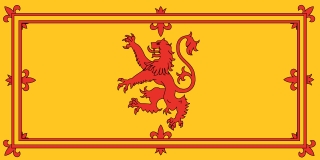
Living in a world of modern science and Alchemy
Alchemy was a natural part of scientific inquiry for members of the Royal Society. It was assumed that Alchemy held the secret of the divine motivating force for the creation of all things which their new type of empirical study could discover. Sir Isaac Newton’s alchemic studies were well known. On the right is his working diagram as he attempts to discover God’s timetable for the world based on the dimensions of the Jerusalem Temple. The Temple and its vessels/furniture fascinated all during this new era of scientific inquiry as it was believed that by studying the divinely mandated dimensions of the Temple and furniture God’s formula for creation could be reverse engineered. To hold the actual vessels/furniture from the Tabernacle so that they could be precisely measured was considered the equivalent of holding the formula for a nuclear weapon.
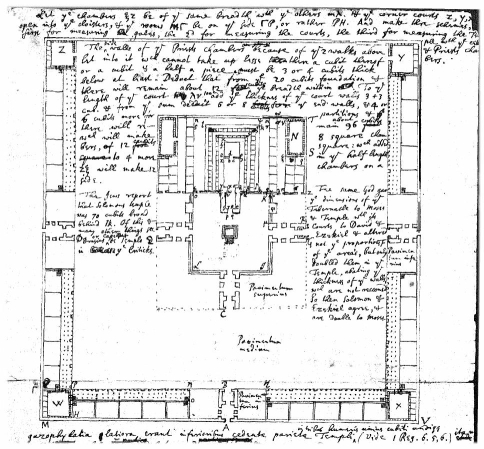
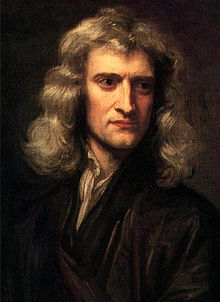
The legacy of Juan Esteban de Ubilla
Ubilla passed to an inner group of the Royal Society the directional details necessary to recover the cache from the island. This was in four coded groups of information that were necessary to be able to navigate a ship, identify the correct island and locate the cache.
A distinct issue that becomes evident is how closely Ubilla was working with the Royal Society. This is shown by the fact that the location had been charted which meant it had been identified sometime prior to the treasure being relocated there. It is also shown by the fact that the navigational data was determined using calculations based upon a prime meridian of the Royal Greenwich Observatory. As the observatory had been commissioned by King Charles II in 1675 and its design and construction overseen by Royal Society members, it was the obvious choice to use it for the prime meridian for any navigational calculations.
Ubilla transmitted what follows to an inner group of the Royal Society. It all ended up with Lord George Anson and became the basis of a legend known as The Treasure of Lord George Anson or another way, Anson’s Gold. This name for the legend slowly became forgotten as it became known by other names over time.
Here is the information that went on to become legend:
1. A chart of the region.
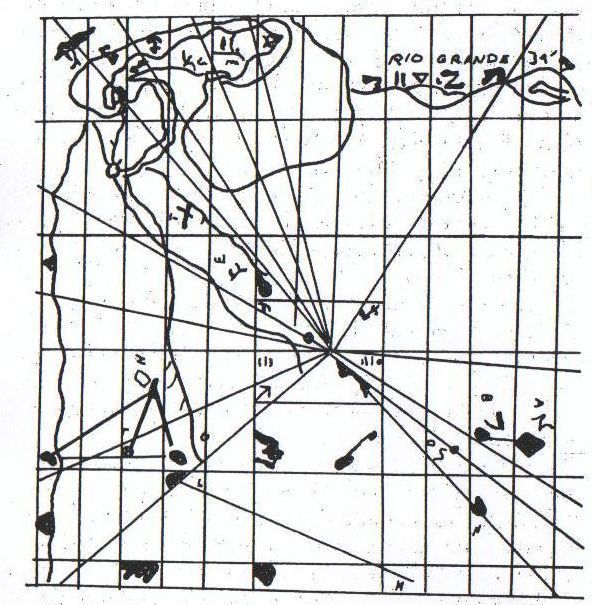
2. A reference to latitude and longitude using the alchemically themed colours of the fixed stars known as the Tetramorphs and the constellations they were within the western zodiac.
Red Yellow
3. A series of consecutive and geographically descriptive codewords in Spanish;
* Trinidad (Trinity)
* Herradura (Horseshoe)
* Pan da Azucar (Sugarloaf). This is a ‘sailing mark’, a distinctive rock to identify the island and the pass through the surrounding reef.
* Playa Blanca (White Beach)
* Aguada (Water)
* Ebanin (Marked rock)
4. The ‘Cero tres Puntas’: literally the ‘Zero (cipher) of the longitude for the Three Points’.
Unfortunately Estaban de Ubilla has no more to do with the treasure as he died shortly after transmitting the location to the Royal Society.
In 1715 a hurricane off the coast of Florida drove his ship onto a reef and he drowned along with over a thousand men of the fleet he was commanding.
Ubilla’s legacy though remains with us. The codewords and directions can be found being used as directional clues in many locations where legends speak of a fabulous lost treasure. From the Island of Trinidade to the ‘white beach’ on the Salvage Islands, from the ‘White Rock’ on Robert Louis Stevenson’s ‘Treasure Island’ map to the inferences of the ‘Horse of God’ leaving its imprint in Le Serpent Rouge these original codewords to find the treasure remain living and vibrant to this day. Copies of his map were used to try and locate the treasure on many different islands.
It was also the beginning of the rumour that the Freemasons were the keepers of the secret about the location of the ‘Lost Word’ or the Ark of the Covenant. That rumour is as strong today as it was then.
He did leave a copy of the map and details for his Order back in Spain. In 1848 these were used by a Spaniard and 3 others to raid the cache in order to obtain ready finance as the Order of the Knights of Santiago fought for its survival. The pseudonyms they used in an attempt to cover their tracks were Diego Alverez, Luke Barrett, Archer Brown and Killorain. Their story, known as ‘The Treasure of the Tuamotus’ or ‘The Bosun Bird Treasure’, will come later.

